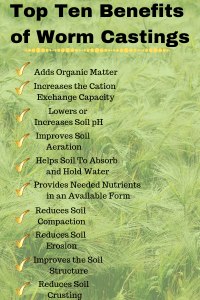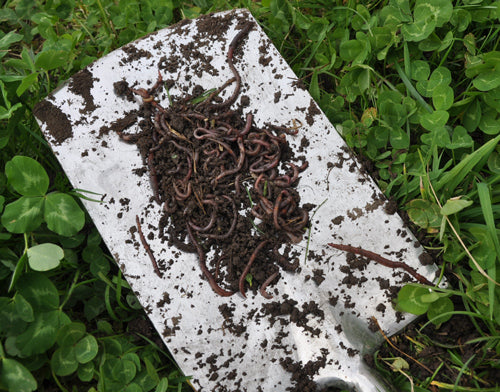Our North Carolina Worms Statements
The Ultimate Guide To North Carolina Worms
Table of ContentsNorth Carolina Worms Fundamentals ExplainedThe Ultimate Guide To North Carolina WormsLittle Known Questions About North Carolina Worms.North Carolina Worms Can Be Fun For Everyone
Instance: 1-gallon of worm castings to 4 gallons of potting mix. 1/2 cup in the base of the planting hole for smaller plants. 1 cup for larger plants.
The enhancement of tea can also include raised microbial biomass to your dirt. You can always side-dress your plants with worm spreadings at any type of time. Just bear in mind, the bacteria will certainly die if revealed to UV rays (Sunlight), so be sure to cover the spreadings with an inch or two of soil.
This baffled them for years till the testing approaches became much better. It would certainly get far better(with more spreadings), degree off, and then decrease. Too numerous worm castings would certainly increase the growth to a speed that the plant can not recover from.
10 Easy Facts About North Carolina Worms Shown
Lots of herbicides service this same principle. 20% by volume seems to be the "Sweet Spot". I have stated the virtues of worm castings for regarding 2000 words. What about the other side of the coin? Nothing is ideal. Worm castings are no different. It takes time to create high quality worm castings.
Worm castings certainly set you back more than chemical fertilizers. Worm castings are on the less costly end of organic plant foods. (50 gallons per year) It is a much more difficult and very costly investment to generate huge quantities of worm castings.

Creating a healthy dirt may be the best benefit of worm spreadings. We went over worm spreadings NPK and likewise the correct nutrient analysis that should apply to worm spreadings.
Not known Facts About North Carolina Worms
We talked regarding some of the downsides linked with worm spreadings. I covered a great deal of product in this post.
The upright burrows are normally open, although the worms cover the top with deposit and waste matter. Roots need oxygen for their development, whereas they generate carbon dioxide that requires to leave the dirt.
Earthworms raise porosity by 2 systems: (1) by developing irreversible burrows, and (2) by boosting soil aggregation. Gathering is enhanced by the mixing of dirt and natural matter in the earthworms' intestines. Lake Rhodhiss Bait. These extremely stable accumulations are deposited by some earthworms in their burrows, and by others at the surface of the soil


In another study, earthworms were estimated to take in 4 to 10 percent of the top 6 inches of the dirt each year. Dirt compaction lowers the porosity of the dirt.
Rumored Buzz on North Carolina Worms
Regular earthworm populaces can quickly consume 2 loads of dry issue per acre annually, partly digesting and mixing it with dirt. The relevance of earthworms to mix surface deposit with soil ends up being very clear in dirts that do not have any type of earthworms. Many of our Pennsylvania dirts have at the very least some earthworms, and the impact of their complete absence, therefore, can not be kept in mind.
(https://relevantdirectory.biz/details.php?id=239350)In these dirts, the development of topsoil with reasonable organic matter content did not happen, leading to bad crop growth. As soon as the cause was developed, the federal government of the Netherlands began a project to present earthworms. After the introduction of the earthworms, a dark topsoil layer was formed, and plant development increased substantially.
They live primarily from partially broken down raw material that is currently included in the dirt. They consume their method with the soil, creating straight burrows that they loaded with their waste matter. These types ingest large quantities of dirt that they combine with digested crop deposit in their intestines. or anecic types live in irreversible upright burrows that can be 5 or 6 feet deep.
These types ingest significant amounts of dirt that they mix with absorbed residue in their guts. Their waste matter is mainly transferred at the surface of the dirt.